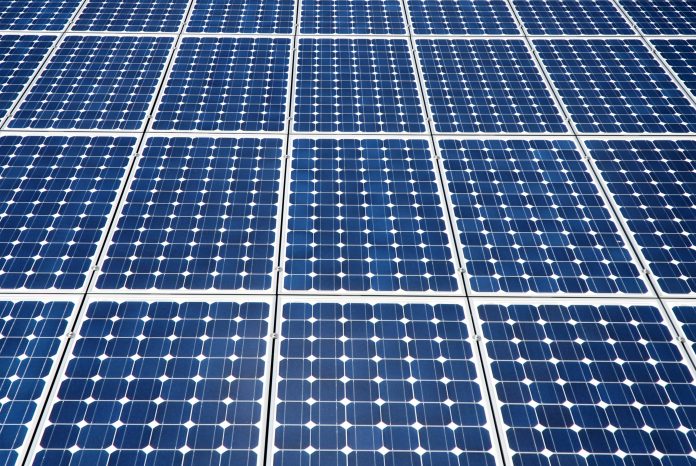Jan Macak, Senior Researcher and Group Leader at the University of Pardubice, Czech Republic, provides insight into novel kinds of solar cell technologies
The development of renewable sources of energy is widely recognised as a research priority today, with scientists looking to efficiently harness solar power to meet our energy needs. Solar cells are increasingly important devices for electricity production and have been considered as the most promising candidates to replace fossil fuels in traditional energy harvesting. In addition to traditional field installations and building-integrated photovoltaics (PVs), they are envisaged to power, until recently, unpowerable devices (e.g. various sensors and electronic microdevices) and mobile objects (e.g. cars, drones).
Besides the many efforts to develop various photovoltaic technologies for all these diversified applications, there is still room to improve the efficiency, performance, stability and cost figures of the solar cells. This naturally requires the development of new types of solar cells. Recently, perovskite-based solar cells have emerged and also, other thin-film technologies based on chalcogenides or organic materials show promise. However, these solar cells are thought to be used in the traditional setting of PV panels on building rooves and fields.
There is also a need for another type of solar cell that provides sufficient energy to directly power (i.e. without any use of battery) relatively small electrical devices and occupy at the same time only, a relatively small surface area (such as few cm2). This is a different philosophy compared with the traditional large-scale PV installations that pump the produced energy to electrical grids or charge batteries in households. Such cell must be conceptually based on non-planar design, utilising highly nanoporous or nanotubular arrays with a huge internal surface to volume ratio, as shown in Figure 1.

Figure 1: A scanning electron micrograph showing the top view of the TiO2 nanotube layer. One can see hollow nanotubes that are closely packed to one another.
Dr Macak and his group are exploring such nanotubular arrays based on titanium dioxide (TiO2) nanotubes in the Chromtisol project, a European Union (EU)-backed initiative based at the University of Pardubice in the Czech Republic. Layers of ordered nanotubular TiO2, shown in Figure 1, offer much potential in this respect, says Dr Jan Macak. “It has become clear that they are unique, they possess large surface area in a small volume, are very stable upon irradiation and can be produced by simple technology.
In combination with suitable chromophores, they can very efficiently absorb both sunlight and artificial light. They can efficiently convert this light into electrons, as outlined in Figure 2,” he explains, “If you want to make a good solar cell, you have to make sure that it absorbs as much light as possible and reflects as little as possible,” he goes on to explain. “Most silicon PVs installations are south-facing, to directly absorb sunlight. But there are also places which do not experience as much sun. The deemed solar cell can function very well at various angles of illumination,” points out Dr Macak. Currently, the absorption rate is typically somewhere between 80-90%, which means that approximately 10% of light is reflected and not used. This is very little compared to other types of solar cells,” he outlines.

This topic is central to the project’s overall agenda. The nanotube layers act as a functional scaffold and provide a large surface area to the cell. “This is very important, because the larger the surface area, the better for the solar cell,” explains Dr Macak. When light is shone onto a regular flat surface, a certain proportion is reflected; by increasing the surface area of the cell and adapting the morphology.”
Dr Macak aims to improve absorption efficiency. “The first major challenge in this project is to make sure that we absorb as much light as possible. TiO2 intrinsically can absorb only UV light, but for a good solar cell, it is also important to absorb visible and infrared light. Putting these chromophores inside nanotubes is not easy however, as the scale is so small. “So the project is not just about developing the solar cell; it’s also about finding the right strategy to put the correct type of chromophore inside the tubes. The aim is to utilise, as efficiently as possible, the space inside the tubes and to have the right nanotube geometry,” continues Dr Macak.”
A number of different strategies are available for this task. In one of the more complex approaches, researchers utilise a thin-film deposition technique called atomic layer deposition (ALD) to coat the interior of the nanotubes. “It’s a fascinating technique that has a lot to offer to PV industry in general,” says Dr Macak. This technique has already been exploited to make active components of various types of solar cells, but also ALD coatings can be used as antireflective, or even to coat the whole call to prevent them against ageing and moisture.
Overall, this new physical concept of a solar cell explores extremely promising materials, yet is unseen and unexplored in a joint device, whose combination may solve traditional solar cells drawbacks (carrier recombination, narrow light absorption).
“The costs would probably be a little bit higher than other cells, but the light management and the efficiencies have the potential to be really very high for the applications needed,” he outlines. “Currently, we are producing a final prototype of the solar cell and we are excited about the results,” he says. The team is also considering the possibility of scaling up the technology.
“Through our work in this project, we are also pushing the limits of ALD, which is a prominent topic in research. We are trying to use these deposition technique materials in quite an interesting way and this will be valuable for researchers and new applications in future,” he says.
Please note: This is a commercial profile











